Hello, I’m Gill and I write a photography blog inspired by the landscapes of Suffolk and beyond. Please subscribe to read more of my writing and visit my website to view my images.
As I shoulder my camera bag and head towards the beach I can hear the sea crashing on the granite boulders below. Lying incongruously at the base of a soft sandy cliff this man made rocky shield has been positioned to protect the eroding coastline.
It is the first day of September, I am on Happisburgh Beach and a brisk wind is blowing onshore pushing the waves higher up the sand than normal. My planned photography location is virtually cut off by the tide so I am forced to head in the opposite direction towards a wider stretch of beach that lies just above the tideline. I feel a bit deflated as there is not so much to photograph here but I press on and hope inspiration will eventually come.
Scanning around for some focal points in a fairly featureless landscape I begin to notice the undulations in the beach. The sea is washing over a bar of sand and falling into a depression on the other side which is quickly filling with water and large amounts of unattractive sea foam generated by the turbulent conditions. In places the sides of the bar have become ridged and worn by the motion of the water and now have a rather attractive scalloped edging. Suddenly this becomes my focus and I have found a subject to photograph.
The sun is just beginning to push above the horizon and the golden light is spilling across the sand and reflecting from the surface of the water. I don’t like the look of the sea foam, but it is moving fast pushed on by the wind and tide and I realise I can make it disappear from my composition by using a slower shutter speed.
How the landscape appears in reality and how we see it in our minds eye are often two very different things. By slowing down my shutter speed I am able to turn a turbulent sea into something much more ethereal. Combined with the pastel colours of sunrise I can slow down an energy fuelled, dynamic morning and create a more tranquil one.
I set up my composition and settle for a shutter speed of 0.6 seconds which is slow enough to take some of the texture out of the water and remove the ugliness of the sea foam but still fast enough to retain a sense of motion within the image. I feel that this shot has a much more tranquil feel to it than the conditions I was experiencing on the beach.
As the tide continues to rise I switch focus to the tide bell further along the beach and take this shot which I think has a lovely ethereal feel to it.
Despite the high tide and my inability to access the part of the beach that I really wanted to visit I was happy with the images I created. They were not what I had in my mind when I set out but in some ways they are better for being spontaneous and unplanned and I am glad I was forced to change my ideas for the morning.
Photography is all about being adaptable and sometimes I think images that are reactive are more interesting than those that are planned.
I had also visited Happisburgh the previous evening when the tide was lower and I could access my favourite part of this beach. The sea had just as much energy about it then but the light was coming from the opposite direction and this was perfect for capturing some of the broken sea defences that litter this coastline.
My favourite elements are the sections of rusty sheet piling that have been broken and sculpted by the waves. The colours in the metal are amazing particularly in the low even light. Despite the falling tide the waves were still battering the steel and I wanted to capture the energy of the water.
I could have used a fast shutter speed to freeze the motion but instead I chose a speed of 1/5 second to help exaggerate the energy and movement of the water. This has created some lovely spray lines which show the direction the water is travelling. I feel this makes for a more dynamic image than if I had frozen the motion completely.
In complete contrast to this shot I found a couple of wooden posts just poking out of the sand. I loved their saturated colours in the late evening light and the limpets that were clinging to their surfaces. This time I wanted to make the posts and the limpets stand out from the sea so I elected to slow my shutter speed to 30 seconds giving the water a misty ethereal effect and making the posts stand out from their surroundings.
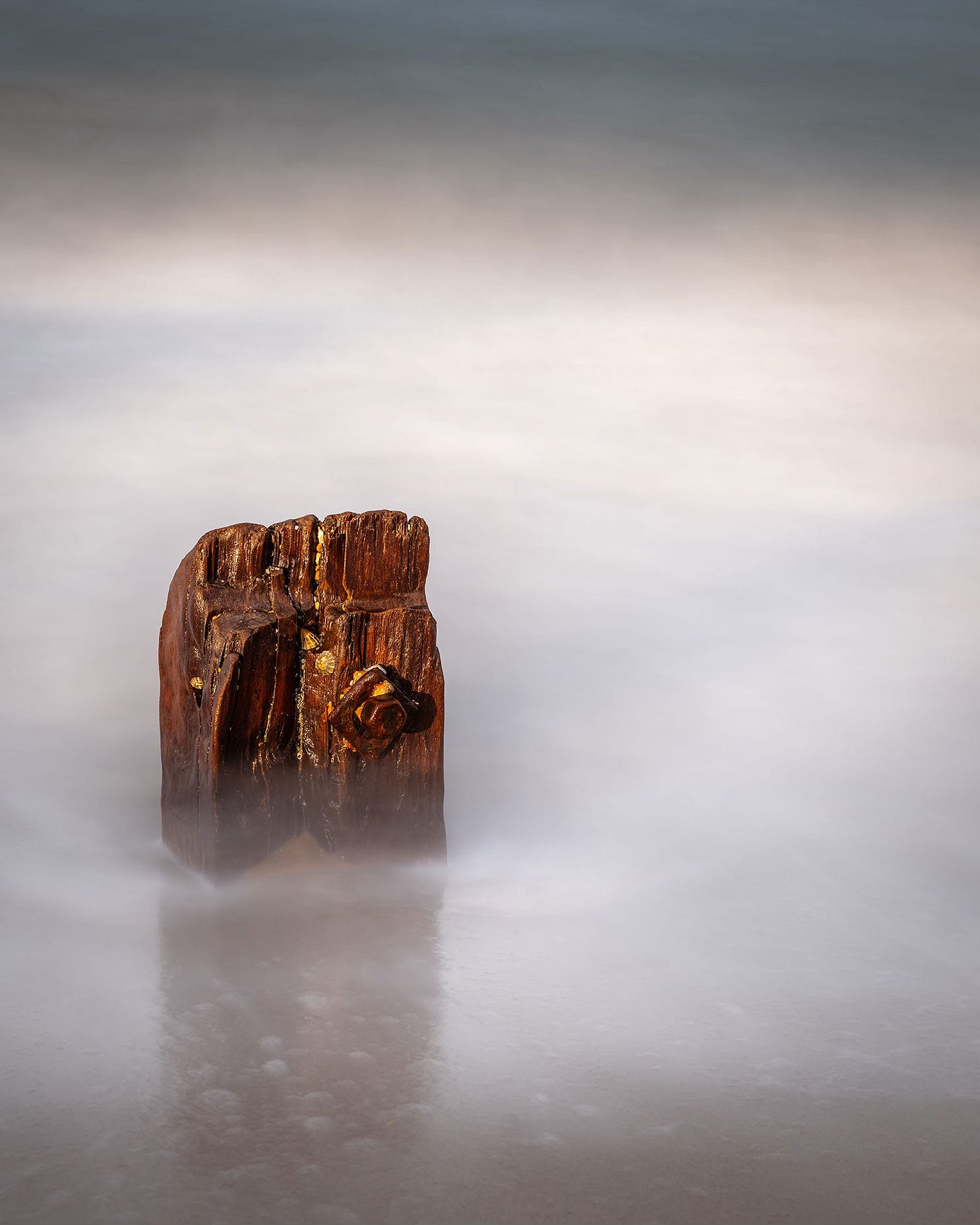
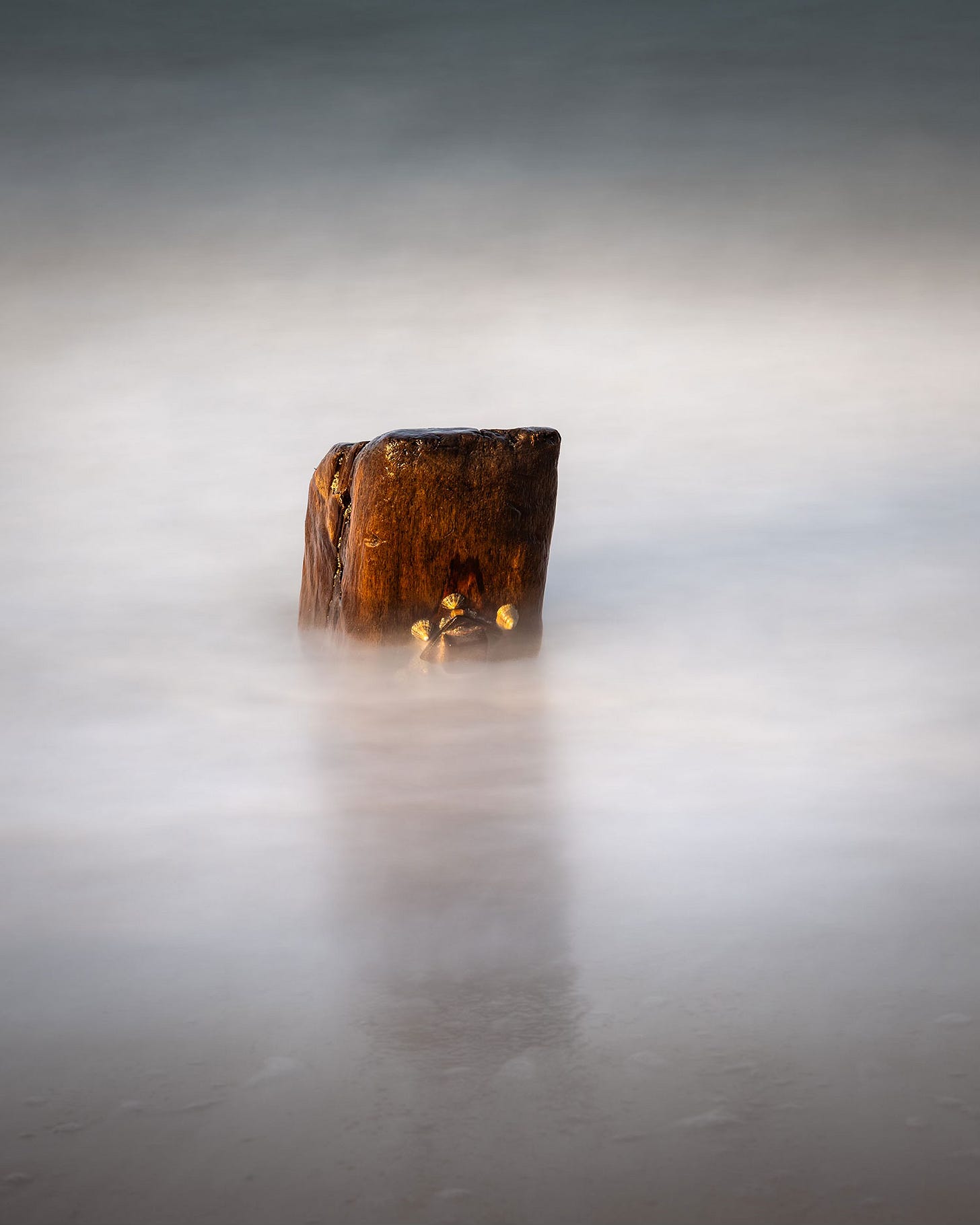
These images have a very different feel to the more dynamic image of the metal piling.
This trip to Happisburgh was my first outing with my new Nikon Z8 (yes, I finally succumbed despite my previous post about new cameras!)
At the moment I only have one lens (Nikon 24-70 F2.8) so I am switching between two bodies but I am loving the new camera and the ease of shooting long exposures with a mirrorless system.
I last visited Happisburgh in the spring and the beach has changed hugely in the intervening months opening up a whole range of new possibilities. However I probably wouldn’t have explored them fully if it hadn’t been for the access issues created by the high tide.
So my lesson from this outing is to strive to be different every time I visit a familiar location. Falling back on tried and tested subjects is ok, but it is lazy and won’t help me produce my best work. Thinking on my feet and reacting to the conditions is the best way to grow as a photographer and I was pleased with the results I came away with.
Do you have trouble seeing familiar locations in different ways? Are you a planner in your photography and how do you cope if your plans don’t work out? I would love to hear your thoughts about this and anything else this post has inspired so please leave your comments below.
Once again thank you so much for reading, I really appreciate all your comments and input. Until next week enjoy your photography.
Gill




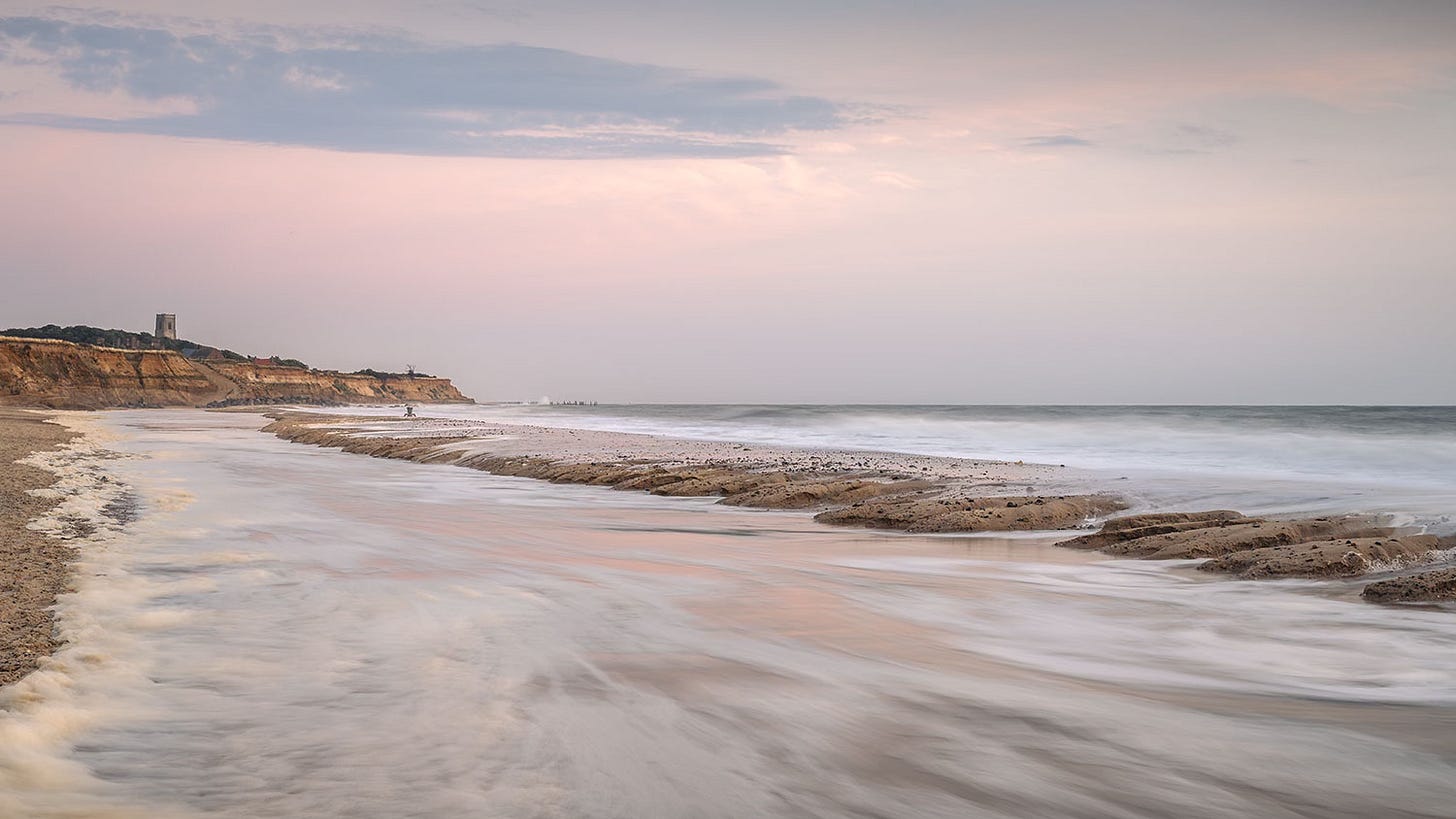
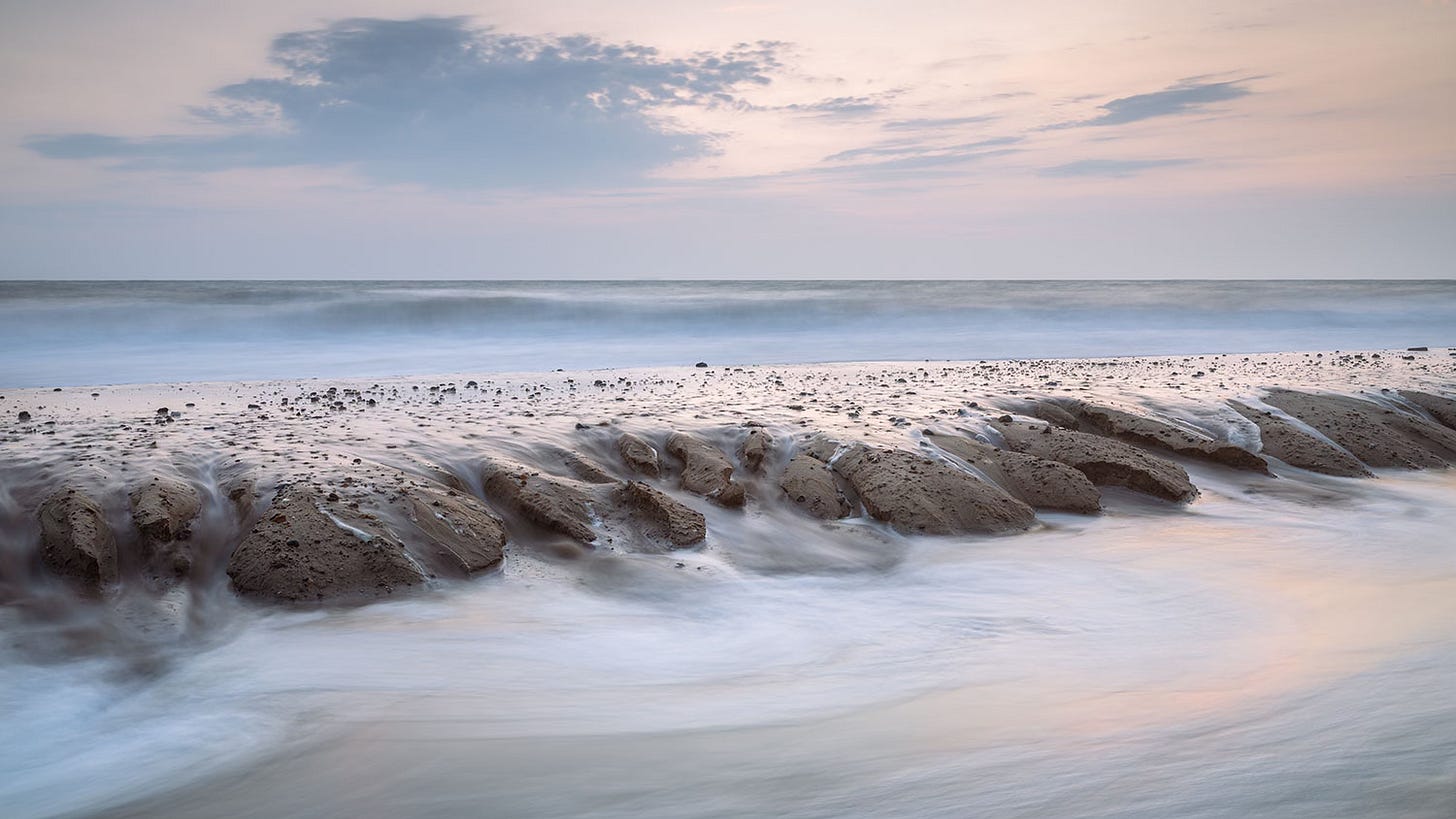
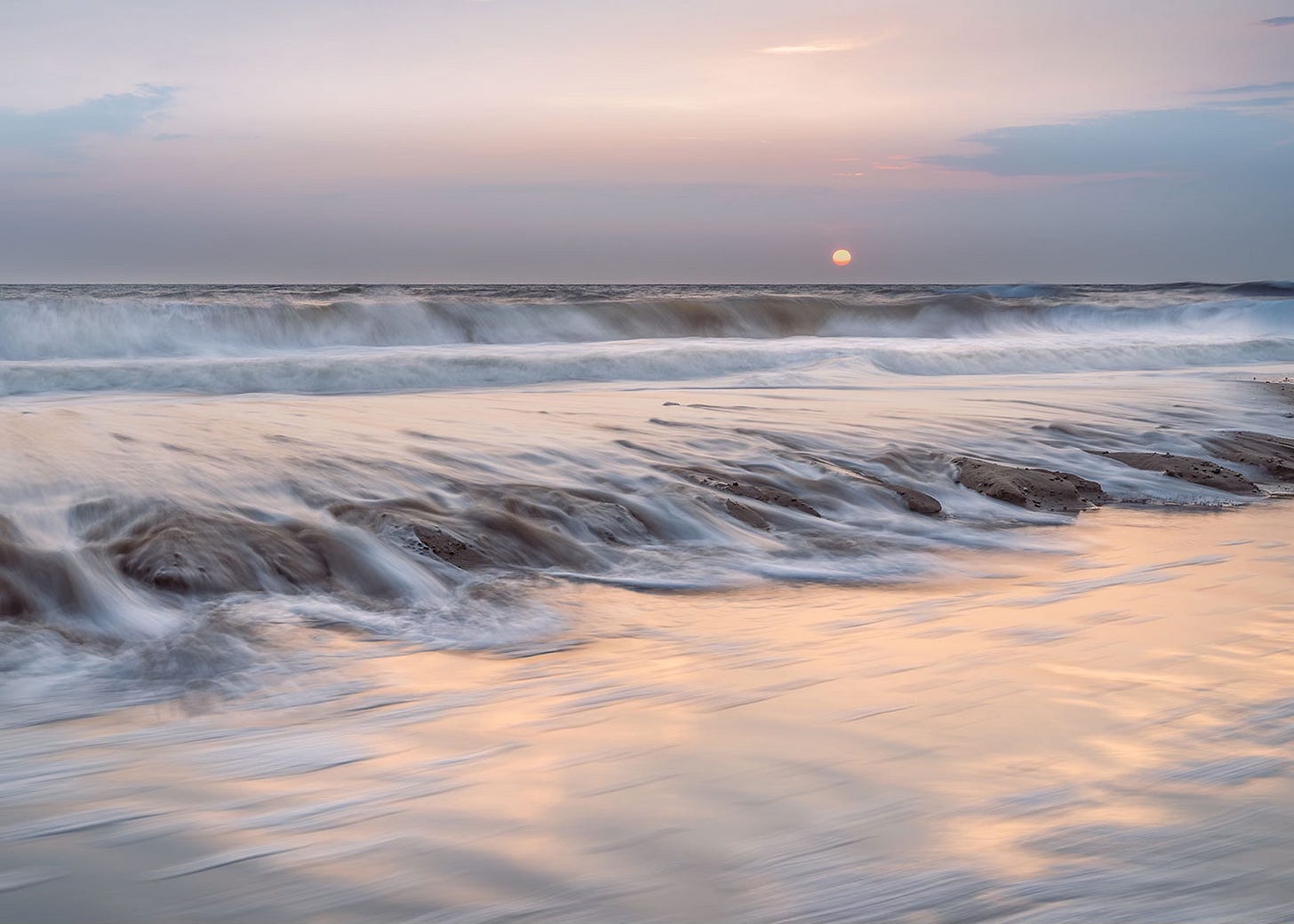

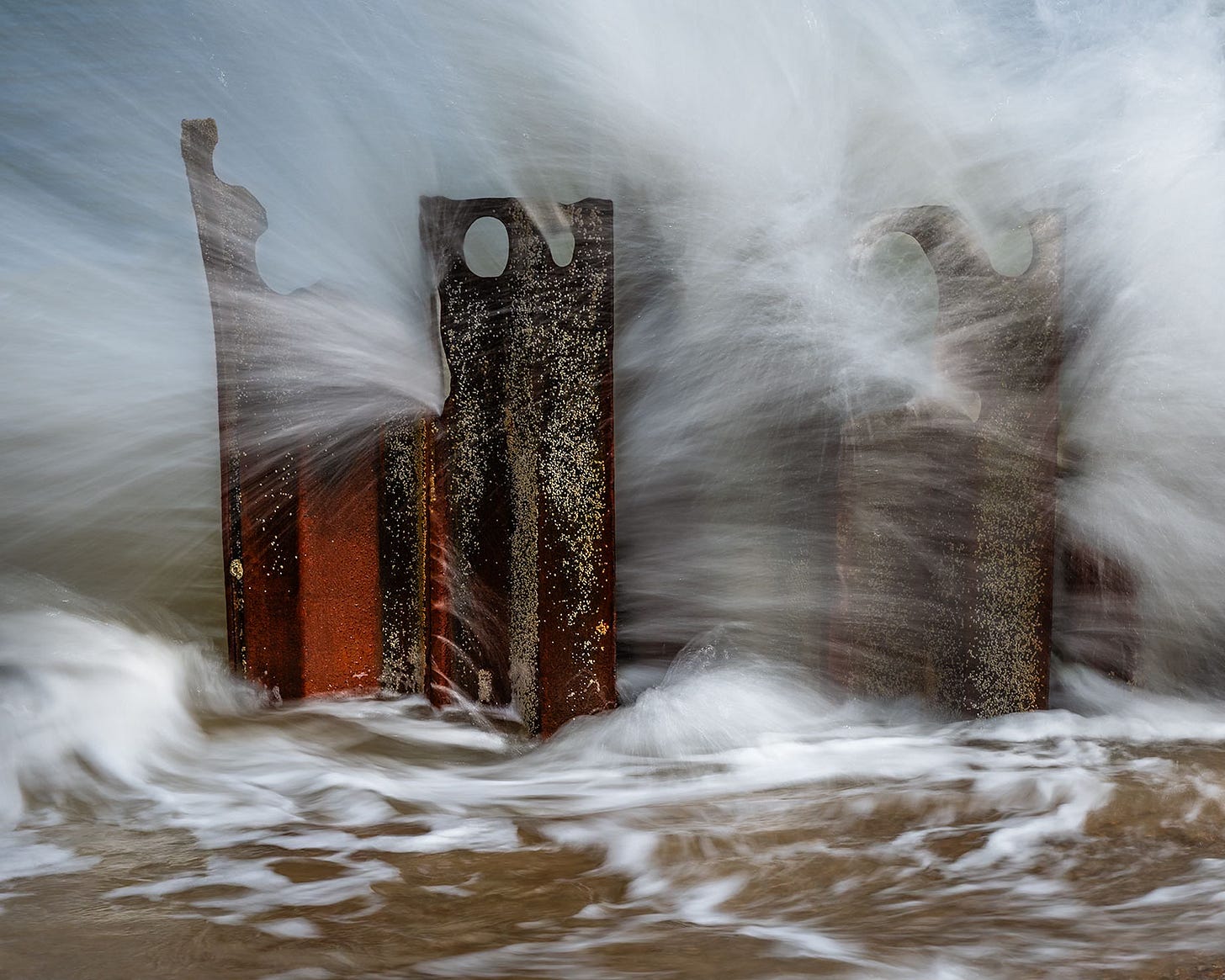
I really love reading about your explorations Gill! I learn something new every time and I really like your approach. I've been focused on exploring new places, but lately I've been thinking more about returning to places I've been, but with a new perspective.
Loving your slow shutter speed photos Gill! I am sure I speak for many people here when I say it can be quite disheartening when all planning doesn’t bring the results hoped for. Thinking of a Plan B ‘on the hoof’ can raise the spirits though.